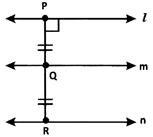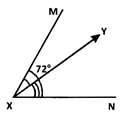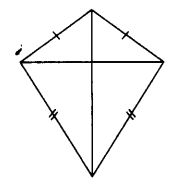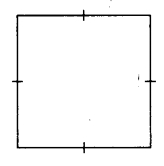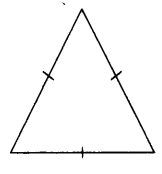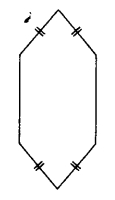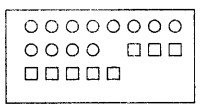Check the below NCERT MCQ Questions for Class 6 Science Chapter 3 Fibre to Fabric with Answers Pdf free download. MCQ Questions for Class 6 Science with Answers were prepared based on the latest exam pattern. We have provided Fibre to Fabric Class 6 Science MCQs Questions with Answers to help students understand the concept very well. https://mcqquestions.guru/mcq-questions-for-class-6-science-chapter-3/
You can refer to NCERT Solutions for Class 6 Science Chapter 3 Fibre to Fabric to revise the concepts in the syllabus effectively and improve your chances of securing high marks in your board exams.
Fibre to Fabric Class 6 MCQs Questions with Answers
Choose the correct option in the following questions:
Fibre To Fabric Class 6 MCQ With Answers Question 1.
Which one of the following is a synthetic fibre?
(a) Nylon
(b) Rayon
(c) Polyester
(d) All of these
Answer
Answer: (d) All of these
Explanation:
All of these fibres are man-made.
Class 6 Science Chapter 3 MCQ Question 2.
Which is a natural fibre?
(a) Silk
(b) Nylon
(c) Rayon
(d) All of these
Answer
Answer: (a) Silk
Explanation:
Only silk is natural.
MCQ Questions For Class 6 Science Chapter 3 Question 3.
The clothes are made up of thinner and thinner strands called
(a) yam
(b) thread
(c) fibre
(d) fabric
Answer
Answer: (c) fibre
Explanation:
Fibre is thinnest unit of fabric.
Fibre To Fabric Class 6 MCQ Question 4.
Separation of fibres of cotton from its seeds is known as
(a) weaving
(b) spinning
(c) knitting
(d) ginning
Answer
Answer: (d) ginning
Explanation:
Cotton fibres are separated from seeds by combing and the process is called ginning.
MCQ On Fibre To Fabric Class 6 Question 5.
Jute fibres are obtaine from
(a) stem of jute plant
(b) seeds of jute plant
(c) fruit covering of jute plant
(d) roots of jute plant
Answer
Answer: (a) stem of jute plant
Explanation:
Jute fibres are obtained from the stem of jute plant.
Ncert Class 6 Science Chapter 3 MCQ Question 6.
Number of yams used to make fabric by weaving and knitting are
(a) two sets of yams in each case
(b) single yam in each case
(c) two sets of yams in weaving and single in knitting
(d) single yam in weaving and two sets in knitting
Answer
Answer: (c) two sets of yams in weaving and single in knitting
Explanation:
In weaving two sets of yam are arranged while knitting is done by a single yam.
Class 6 Science Chapter 3 MCQ With Answers Question 7.
Weaving of fabric is done in
(a) handlooms
(b) power looms
(c) both (a) and (b)
(d) takli
Answer
Answer: (c) both (a) and (b)
Explanation:
Weaving is done both in handlooms and power looms.
Class 6 Fibre To Fabric MCQ Question 8.
Which one is spinning device?
(a) Takli
(b) Loom
(c) Charkha
(d) Both (a) and (c)
Answer
Answer: (d) Both (a) and (c)
Explanation:
In looms, fabric is woven; while by takli and charkha, yam is made.
Fiber To Fabric Class 6 MCQ Question 9.
Which of the following is a plant fibre?
(a) Wool
(b) Silk
(c) Cotton
(d) Nylon
Answer
Answer: (c) Cotton
Explanation:
Cotton is a plant fibre.
Class 6 Science Ch 3 MCQ Question 10.
The right time to cut jute plants is
(a) matured stage
(b) before flowering stage
(c) flowering stage
(d) any time after flowering
Answer
Answer: (c) flowering stage
Explanation:
Jute plants are usually cut at the flowering stage.
Match the following items given in Column A with that in Column B.
| Column A | Column B |
| (a) Jute is obtained from | (i) Charkha |
| (b) Fibre from retted jute are extracted by | (ii) Sliver |
| (c) Separation of fibres from jute stem | (iii) Bales |
| (d) Compressed bundles of cotton | (iv) Retting |
| (e) Cotton is collected from cotton plants by | (v) Hand picking |
| (f) Separation of cotton from seeds | (vi) Silk and wool |
| (g)Loose rope of cotton fibres | (vii) Stem of‘putson’ |
| (h) Animal fibres | (viii) Hands with jerks and pulls |
| (i) Suitable for wearing in kitchen | (ix) Ginning |
| (j) Used to spin yams | (x) Cotton clothes |
Answer
Answer:
| Column A | Column B |
| (a) Jute is obtained from | (vii) Stem of ‘putson’ |
| (b) Fibre from retted jute is extracted by | (viii) Hands with jerks and pulls |
| (c) Separation of fibres from jute stem | (iv) Retting |
| (d) Compressed bundles of cotton | (iii) Bales |
| (e) Cotton is collected from cotton plants by | (v) Hand picking |
| (f) Separation of cotton from seeds | (ix) Ginning |
| (g) Loose rope of cotton fibres | (ii) Sliver |
| (h) Animal fibres | (vi) Silk and wool |
| (i) Suitable for wearing in kitchen | (x) Cotton clothes |
| (j) Used to spin yams | (i) Charkha |
Fill in the blanks with appropriate words:
1. Clothes are made up of …………… .
Answer
Answer: fibres
2. Different clothing materials have ………………. properties.
Answer
Answer: different
3. Cotton plants need…………………. climate.
Answer
Answer: warm
4. Cotton is planted in the ………….. .
Answer
Answer: spring
5. …………… soil is excellent for the cultivation of cotton.
Answer
Answer: Black
6. …………………….. Usually cotton is picked from the plants.
Answer
Answer: hand
7. Separation of cotton fibres from their seeds is called …………….. .
Answer
Answer: ginning
8. A ………………. of cotton is a loose strand of cotton fibres.
Answer
Answer: sliver
9. In villages, the cloth is woven on small scale in …………… .
Answer
Answer: handloom
10. Jute is cultivated in ……………… season.
Answer
Answer: rainy
11. Jute is grown in …………………. soil.
Answer
Answer: alluvial
12. On large scale, cotton clothes are made by machines in ……………. .
Answer
Answer: powerloom
13. Twisting of fibres into yarn increases the ………………. of fibres.
Answer
Answer: cohesion and strength
14. Cotton fibres are obtained from the …………….. of cotton plant.
Answer
Answer: seeds
15. Jute fibre is obtained from the …………………. of jute plant.
Answer
Answer: stem
16. Tightly compressed bundles of cotton are called ……………. .
Answer
Answer: bales
17. The process of getting fibres from the jute stem is called …………… .
Answer
Answer: retting
18. People migrated to colder regions only after the invention of …………… .
Answer
Answer: fire
State whether the statements given below are True or False:
1. All the plants have fibres in their body structure.
Answer
Answer: True
2. Cotton is the most important industrial crop.
Answer
Answer: True
3. India was the proud inventor of cotton clothing.
Answer
Answer: True
4. Cotton plants need cold climate.
Answer
Answer: False
5. Alluvial soil is best suited for cotton.
Answer
Answer: False
6. Jute is obtained from the stem of ‘putson’.
Answer
Answer: True
7. Jute fibres are quite strong, 6-8 feet long and have a silky lusture.
Answer
Answer: True
8. Primitive men and women had no idea about clothes.
Answer
Answer: True
9. Type of clothing which we wear is influenced by climate, occupation, culture and daily needs.
Answer
Answer: True
10. Cotton and woollen clothes are smooth to touch.
Answer
Answer: False
11. Clothes are made from threads, and threads, in turn, are spun from fibres,
Answer
Answer: True
12. Coconut fibres are good for making yarn.
Answer
Answer: False
13. Twisting of fibres into yam increases cohesion.
Answer
Answer: True
14. While working in kitchen, we should wear cotton clothes.
Answer
Answer: True
15. Clothes protect us from adverse weather condition.
Answer
Answer: True
We hope the given NCERT MCQ Questions for Class 6 Science Chapter 3 Fibre to Fabric with Answers Pdf free download will help you. If you have any queries regarding Fibre to Fabric CBSE Class 6 Science MCQs Multiple Choice Questions with Answers, drop a comment below and we will get back to you soon.
